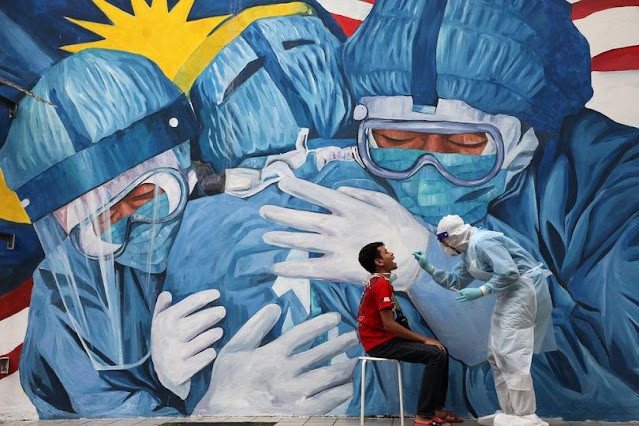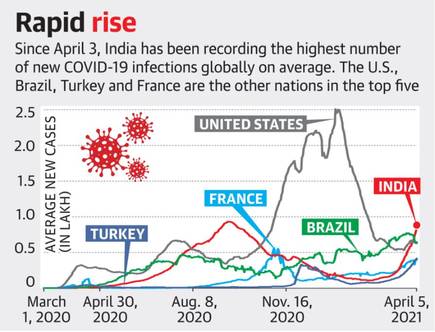Health Care System In India has been severely hit with the second wave of Covid-19. The number of cases is surging day by day. Nation with a population of 1.4 billion (around 18 percent of the world’s population), the social distancing seems to be a toss. The Nation continuously breaking its daily record, reporting over 4,00,000 cases on a day to day, whom to be blamed for?.
The government is sole to not be blamed for this uncontrollable situation, the rallies and spiritual processions are the catalyst to this pandemic; where we participated to the fullest!
The first wave of Covid-19 taught us to maintain our hygiene and work on our immunities and maintain social distancing. With nationwide lockdowns, the government got a chance to manage the pandemic efficiently but the second wave proved that we were living in a sandcastle, presuming to be safe and guarded. With social distancing and masking being neglected we all surged the cases in no time.
An over-stressed frontline workforce is bravely trying to end systemic deficiencies but
we as citizens’ have didn't provide a breather to our medical systems.
Reality Check:
The International Monetary Fund (IMF) said it expects India’s economy to grow 12.5 percent within the year ending March 2022, after shrinking 8 percent within the prior year.
Despite being the sixth-largest economy, the Indian Government intends to speculate only 2.5 percent of the country’s GDP into health care by 2025, contrary to 6 percent as the global average.
According to National Health Profile (2018), India is among the
countries spending the least on public health care. With spending just 1.02
percent of GDP on health care facilities we stand lowest within the tally.
Ironically economically weak counties like Bhutan, Nepal, and land, the common
spending on health care facilities stand 2.5 percent, 1.1 percent, and 1.6
percent respectively of their GDP.

As medicines compose the lion’s share of health care spending in Indian household, the insufficient allocation for the well-being sector pushes 7 percent of Indians below the poverty line and about 23 percent of the sick can't afford the healthcare facilities.
A recent report by the WHO highlighted the particular proven fact that nearly 70 percent of India’s
population spends most of their available income on healthcare. The per capita expenditure
on health is around Rs. 1,112 as surveyed in 2015-16. Medical Insurance
contributes 5% of the expense and the rest 95 percent is met out of pocket
expenditure of the patient; a catastrophic healthcare cost causing
impoverishment.

What should Health Care
System do?
Governments throughout the globe have invested publicly in health care facilities to produce good quality with subsidized health care to its citizens. In India, the private health care sector (around 70 percent to 80 percent) makes the majority of health care facilities because the govt. and public health facilities are still inadequate.
The role division between public and private health systems wasn't the initial vision we had for India. Indeed our country within the year 1946 emphasized the building of a comprehensive healthcare network, thinking of health as a right of all people, and government the foremost player in health.
The public health facilities must be taken care of. The health care facilities require catering the three priorities – cost, quality, and access:
With Indian medical facilities still churning the budget of commons, the strain in affordable and subsidized medical treatment is required for every segment of society. Subsidized medical facilities don't mean to compromise with the standard of delivery.
Standardized medical procedures and medications are much needed to boost the national health structure. Physical reach is one altogether the essential determinants of access. The facilities are meant to be accessible to every citizen of the country. Unless we think about block-level medical centers, we can’t cater to medical emergencies effectively.
Quality health care services make health systems resilient. Even
during a crisis or epidemic, resilient health systems can deliver high-quality
services
Conclusion:
The much-awaited social welfare program should be carefully unrolled under the improved Health Care System In India, ensuring that the tiniest member of the target population is enrolled and understands what precisely the scheme is supposed for them.
An increase in the percentage of public funding in the medical
sector is desired, so on make
within the reach and budget of
each household aiming at quality and accessibility.










Great
ReplyDeleteThanks for appreciation buddy
Delete